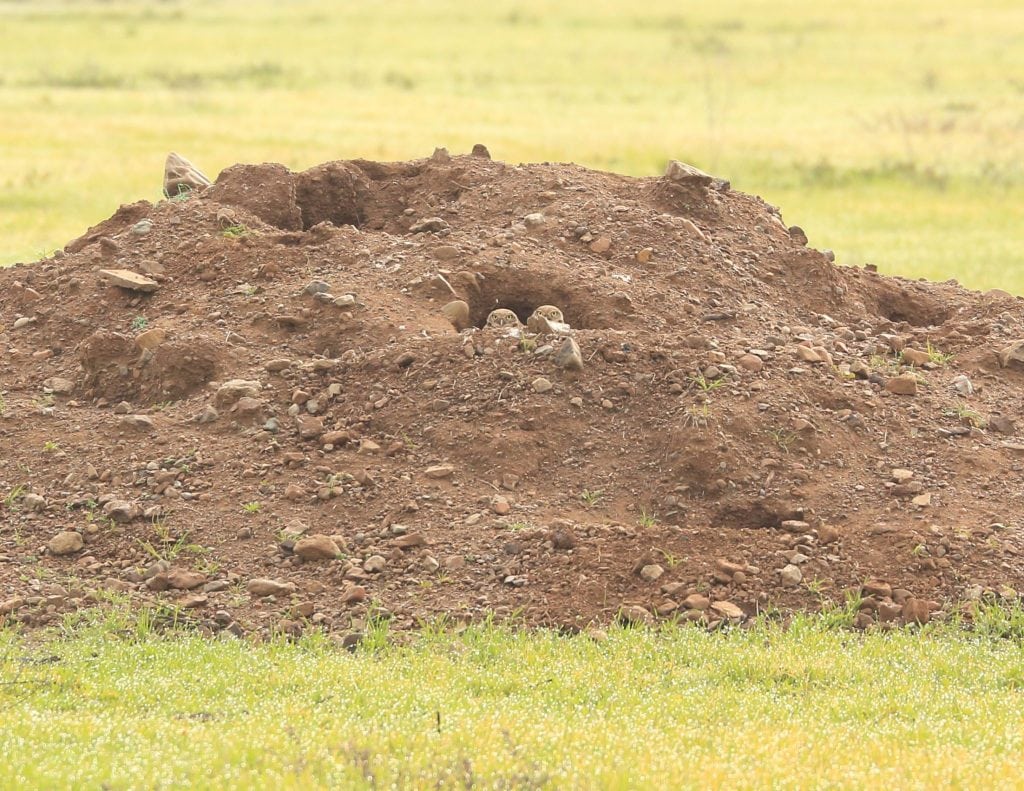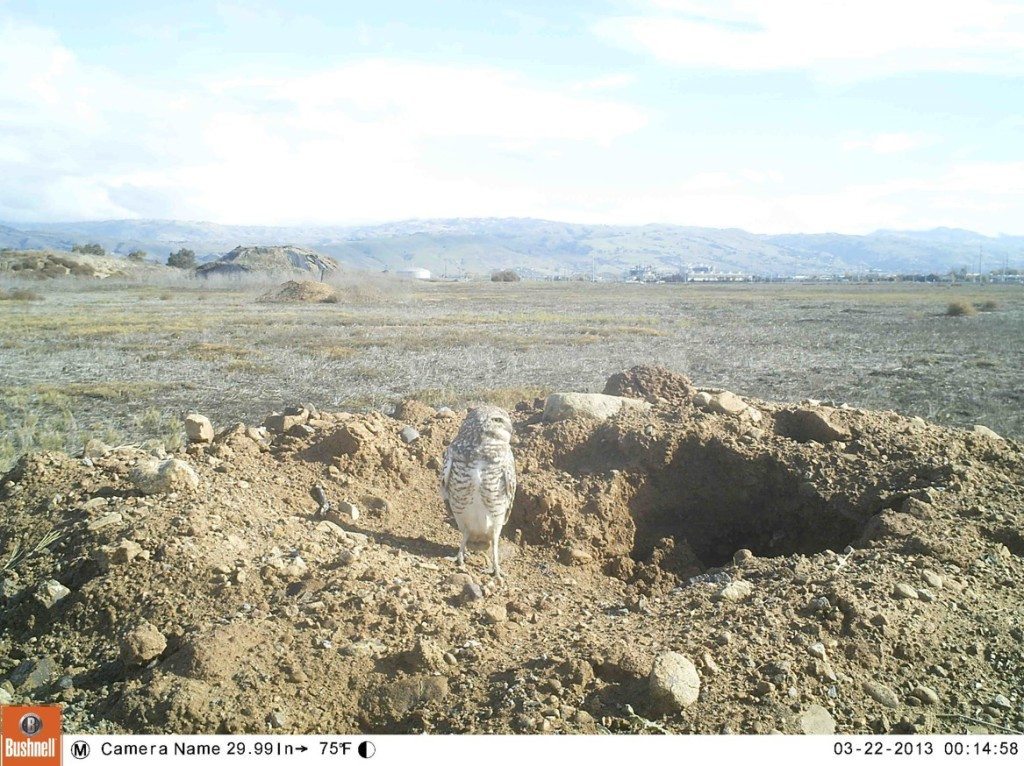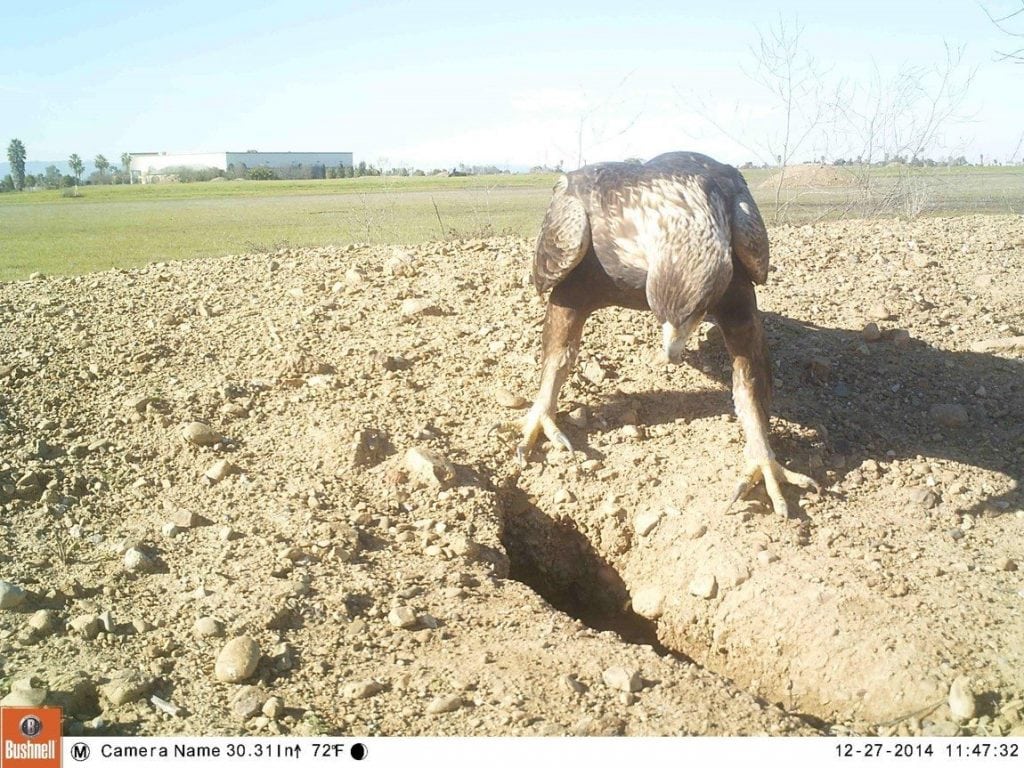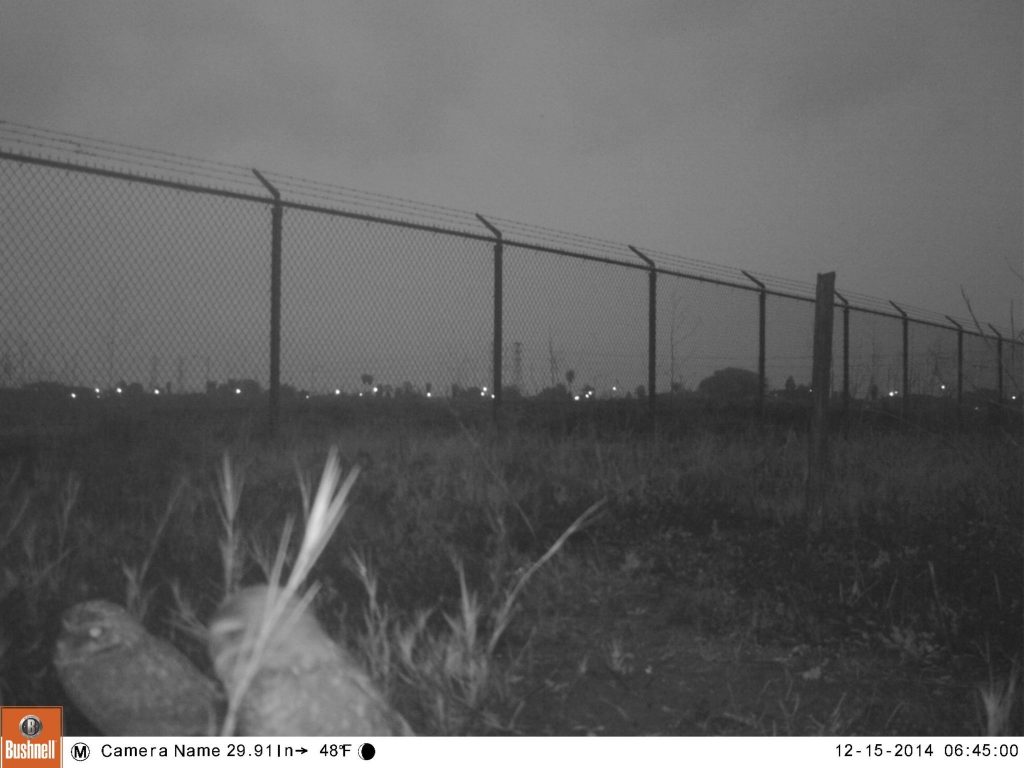Burrowing Owls in San Jose
By Lisa Eileen Hern
I can’t remember what year it was when I fell in love with Burrowing Owls, but I clearly remember being at Shoreline Park in Mountain View in the spring, and looking down at green grass with lots of yellow eyes peering up at me from holes in the ground. Owls, in the ground! Once I gazed further into those gorgeous eyes, I knew I was in love. I have since become a docent in Golden Gate Bird Alliance’s Burrowing Owl program in Cesar Chavez Park in Berkeley.
The GGBA program has only a small number of owls in its area – six in the winter of 2012-13, four last winter, and two this winter. So I was very interested when I heard about the large, successful Burrowing Owl conservation program being run by Santa Clara Valley Audubon in northern San Jose.


Josh McCluskey — one of the leads of the SCVAS owl program — gave a public lecture on January 21 about the 180-acre section of Regional Wastewater Facility buffer lands that they manage for Burrowing Owls in a partnership with the City of San Jose. SCVAS’s ultimate goal is to create, maintain and monitor an ideal owl habitat.
One of their tactics is to provide more burrows. Although Burrowing Owls traditionally adopt burrows made by other species such as squirrels, SCVAS has had great success with artificial burrows — attracting pairs that have produced an average of 4.8 chicks per year (versus about three for other Burrowing Owls in the area).
SCVAS also works to provide fruitful hunting habitat and plentiful prey for the owls by keeping the grass less then one meter high and maintaining an open area without trees but with lots of dirt mounds and rock piles.
Most importantly, they’re trying to limit predation. They set traps for skunks, which are the owls’ main predators. (Other predators include Prairie Falcons, Golden Eagles, hawks, and possums.)

SCVAS tries to track the owl population through banding, although this is hampered by the lack of a central repository for Burrowing Owl banding information. Many of the banded owls are never reported again. Radio telemetry could prove more fruitful but is expensive.
Meanwhile, SCVAS has placed cameras throughout the preserve to document mating, feeding, and parenting behaviors, as well as predation. (The photos in this blog post were taken by those cameras!)
Josh shared some amusing insights into the owls’ relationship with ground squirrels. When the owls arrive, they typically scare the squirrels off in order to take over their burrows. But after a while, the owls move over and let the squirrels back in. It seems squirrels are very clean and tidy, and will spend an incredible amount of time cleaning up the dirty hovel. Then the owls move in again and lock out the squirrels. This appears to occur frequently. Even young chicks have been observed puffing out their feathers to scare off unwanted squirrels!


The San Jose program seems to be successful so far. The total owl population on the site has grown from two in 2012 to 40 in 2014. In 2014, six pairs of owls gave birth to 29 chicks. All successfully fledged their burrows!
Burrowing Owl populations overall continue to face challenges such as loss of habitat and development, and are listed as a Species of Special Concern in California. I was heartened about our own GGBA program after hearing Josh’s lecture. I hope we can learn from our sister Audubon’s program in the South Bay to continue to support our own Burrowing Owl population
——————————————
GGBA member Miya Lucas also attended the lecture and contributed to this report. As part of our Birdathon 2015 fundraising month, Golden Gate Bird Alliance will sponsor a field trip to the San Jose Burrowing Owl site on Saturday April 4, to be led by Josh McCluskey. Registration for this trip will open in mid-February. For details, check the Birdathon section of our web site around Fabeurary 15.
